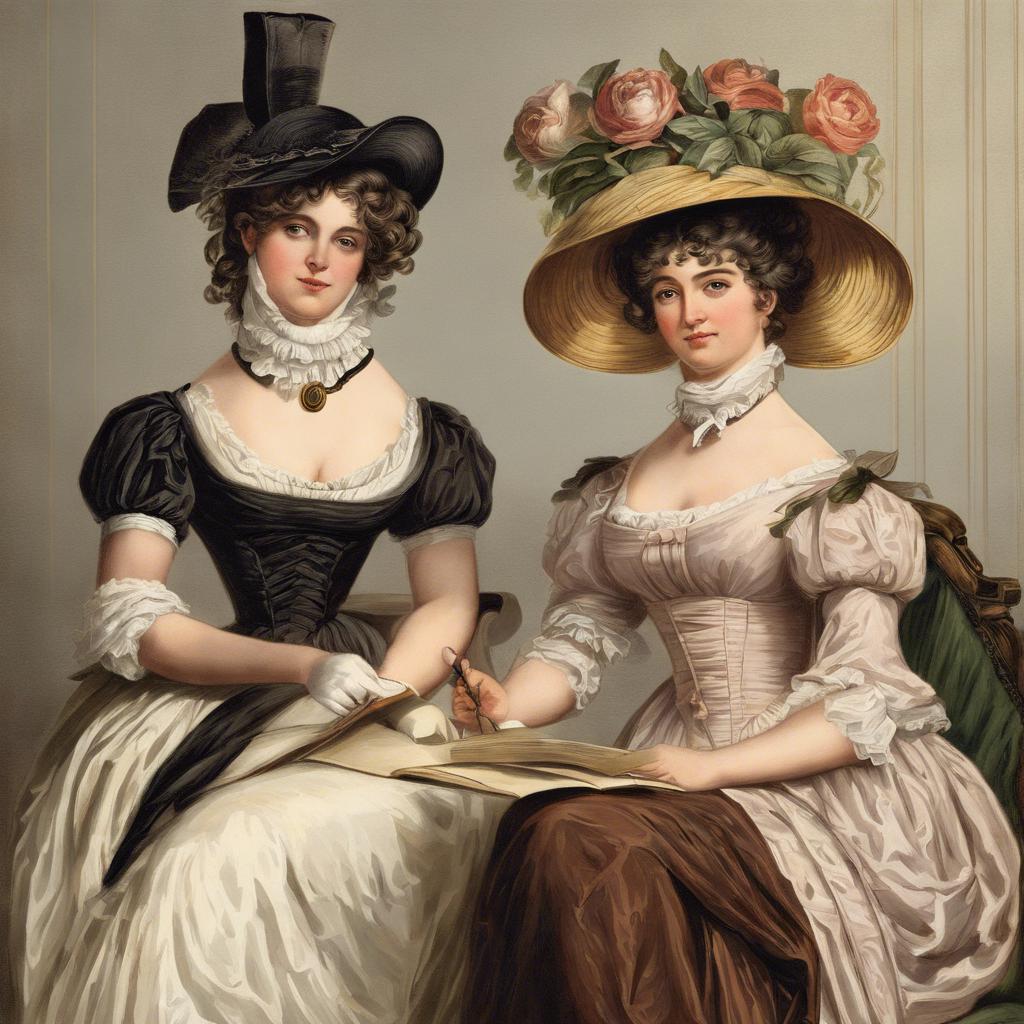In the early 19th century, during the Regency era in England, women played a complex and multifaceted role in society. From the refined elegance of the upper class to the struggles of the working class, Regency women navigated a world of strict social norms and evolving cultural landscapes. Through their fashion, manners, and relationships, these women embodied the ideals and challenges of their time. Join us as we delve into the lives of Regency era women and explore the intricacies of their daily lives, aspirations, and influence on the society of the era.
Step Into the World of Cheryl Bolen
Dive into the enchanting stories of love, intrigue, and elegance set in the Regency Era. Cheryl Bolen's novels offer timeless romance and captivating tales that will leave you wanting more.
Explore Cheryl Bolen's Books Now
Characteristics of Regency Era Women: Fashion, Social Etiquette, and Education
The Regency Era was a time marked by distinct characteristics that defined the role of women in society. Fashion played a significant role in shaping the image of a Regency Era woman, with delicate fabrics, high Empire waistlines, and empire silhouettes being the hallmark of the era. Women of this time adorned themselves with intricate hairstyles, delicate accessories, and fine muslin gowns that showcased their femininity and refinement.
Social etiquette was of utmost importance for Regency Era women, who were expected to adhere to strict rules of conduct and etiquette. Women were expected to be demure, graceful, and well-mannered, always acting with decorum and poise in social situations. They were well-versed in the art of conversation, adept at engaging in witty banter and intellectual discourse, while also maintaining an air of elegance and refinement.
Education for Regency Era women was often limited, with most women receiving a basic education focused on accomplishments such as music, dancing, drawing, and languages. However, some women of higher social status had access to more extensive education, including reading, writing, and arithmetic. Despite these limitations, many Regency Era women proved to be intelligent and well-read, challenging societal expectations and pushing for greater opportunities for education and personal growth.
The Role of Women in Regency Society: Marriage, Motherhood, and Social Standing
In Regency society, the role of women was largely defined by traditional expectations surrounding marriage, motherhood, and social standing. Women were seen as the homemakers and caretakers of the family, with their primary duties centered around managing the household and raising children. Marriage was considered the ultimate goal for a woman, as it not only provided financial security but also elevated her social status.
Marriage:
- A woman’s worth in Regency society was often tied to her ability to secure a suitable marriage match.
- Marriages were often arranged by families to strengthen social connections and consolidate wealth.
- Women were expected to be obedient and subservient to their husbands, with their main role being to support and nurture their family.
Motherhood:
- Motherhood was highly valued in Regency society, as women were expected to bear children to carry on the family line.
- Women were responsible for the upbringing and education of their children, instilling them with the values and morals deemed important by society.
- A woman’s success as a mother was often judged by the behavior and accomplishments of her offspring.
Social Standing:
- A woman’s social standing in Regency society was determined by her family background, wealth, and connections.
- Women who married into higher social circles were able to increase their social standing and gain access to exclusive social events and opportunities.
- Maintaining a respectable reputation and adhering to societal expectations were essential for women to secure their place in the rigid social hierarchy of the Regency era.
Challenges Faced by Women in the Regency Era: Limited Rights, Patriarchal Society, and Social Expectations
During the Regency Era, women faced numerous challenges that restricted their rights and autonomy. One of the primary obstacles was the limited legal rights that women possessed. They were unable to inherit property, enter into contracts, or even retain their earnings. This lack of financial independence left many women dependent on male relatives or husbands for their well-being.
Moreover, the patriarchal society of the time reinforced the subjugation of women. Men held positions of power in government, business, and even within the family unit. Women were expected to prioritize their roles as wives and mothers above all else, with their worth often tied to their ability to secure a suitable husband and produce heirs.
Additionally, women in the Regency Era were constrained by rigid social expectations that dictated their behavior and appearance. Modesty, decorum, and obedience were prized virtues, while any deviation from these norms could result in social ostracism. The pressure to conform to societal standards placed a significant burden on women, stifling their individuality and aspirations.
Empowering Women in the Regency Era: Strategies for Education, Advocacy, and Independence
During the Regency Era, women faced numerous challenges in terms of gaining education, advocating for their rights, and achieving independence. One strategy that emerged during this time was the establishment of women’s schools and educational opportunities. These institutions played a crucial role in empowering women by providing them with knowledge and skills that were traditionally reserved for men.
Another key strategy for empowering women in the Regency Era was advocacy. Women began to speak out against social injustices and fight for their rights in various ways. They participated in political movements, wrote influential literature, and engaged in public debates to raise awareness about issues affecting women. By advocating for themselves and others, women were able to make significant strides towards equality and independence.
Lastly, independence was a major focus for women in the Regency Era. They sought economic freedom through entrepreneurship, inheritance, and investments. By gaining financial independence, women were able to assert their autonomy and break free from societal norms that dictated their roles and limitations. This newfound independence allowed women to make choices for themselves and pursue their own ambitions.
In Summary
the Regency era woman was a figure of great complexity and influence during a time of significant change in society. From their fashion choices to their political activities, these women played a crucial role in shaping the cultural landscape of the period. By examining the lives and experiences of these remarkable individuals, we gain a deeper appreciation for the resilience, intelligence, and creativity that defined the Regency era woman. As we continue to study and celebrate their legacy, may we draw inspiration from their example and strive to emulate their enduring impact on history.


